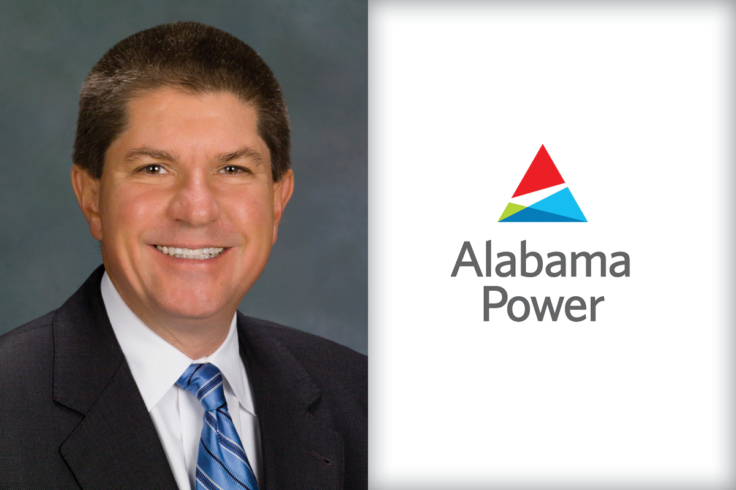An Interview with Zeke Smith, EVP of External Affairs at Alabama Power
Gloria Dittus, Chairman of Story Partners, conducted an interview with Zeke Smith, Alabama Power’s Executive Vice President of External Affairs. Alabama Power collaborates with the state and Alabama’s communities, including businesses and universities, to advance workforce development in state. Zeke is actively involved in this process and has been appointed to the state’s College and Career Ready Task Force. Zeke was appointed by the Governor to serve as chair of the Alabama Workforce Council.
Education and training are critical as industries address the need for a highly-skilled workforce. As the past chair of the Alabama Workforce Council, please discuss some of the initiatives you have led to support and train Alabama’s workers and develop the next generation workforce.
Workforce development is an important priority for the state of Alabama. Moreover, education and training are critical as industries address the need for a highly-skilled workforce.
By 2025, Alabama will need to add 500,000 high-skilled employees to the workforce in order to fill existing industry’s labor needs and compete for new businesses. At the request of Governor Ivey, the Alabama Workforce Council (AWC) developed a coalition of workforce leaders to engage stakeholders and build a statewide plan. The result was the Success Plus Initiative, which addresses Alabama’s increasing need for workers with certificates, credentials, or degrees in addition to a high school diploma.
We are also proud of the AWC’s Public-Private Partnership Committee led by Alabama Power Foundation President Myla Calhoun. The committee provides technical assistance, including grant writing services and outcomes tracking, to a cohort of more than 30 nonprofits focused on expanding workforce and economic opportunities. So far, cohort members have been awarded $7 million in out-of-state grant support and have another $6 million in pending or in-process applications.
Another approach gaining traction is Career Coaching. The AWC worked with partners to expand the use of Career Coaches who work with high school students on identifying potential career paths. In the past five years, the Alabama state legislature has supplemented the program with $1.7 million in additional funding and Alabama has increased the number of Career Coaches statewide from 36 to 94.
We recognized early on that clear communication was critical. We developed AlabamaWorks!, a single, unified brand that encompasses all state-funded workforce entities and efforts. Along with branding, we developed a one-stop-shop website – alabamaworks.com – for all Alabama workforce resources. For example, the toolkits that Career Coaches use in working with students on potential career options are publicly available on alabamaworks.com.
The needs of the workforce across industries are changing. What are some of the changes or trends that you have seen take place in recent years and what policies or programs can American businesses put in place to prepare for and adapt to the changing U.S. workforce?
Technology is driving the future of workforce, which makes closing the digital divide a top priority. The Governor’s Office last year estimated as many as 842,000 Alabamians are without access to high-speed internet. That is why it is so important to continue with public-private partnerships to open up broadband access in low-income, rural communities across the state using our existing fiber optic networks. We are fortunate to live in a state where our policymakers are committed to closing the digital divide by passing innovative policies and incentives. Alabama’s workforce will see transformative results once our unserved schools and communities are connected with the rest of the world.
Virtual Reality (VR) software is an example of technology advancing the means of training and education. We know that learning the “old way” – through videos, lectures, and PowerPoints and ending with a test – isn’t suited for everyone. We also know that learning through VR has a 75 percent retention rate as compared to lectures (5 percent) or watching and listening (20 percent). As a result, Alabama Power’s Economic & Community Development team is developing a partnership of public and private entities throughout the state to create a Virtual Reality Workforce Development Training Center. We are looking to pilot this new approach with high school students, out-of-school youth, and post-secondary students.
Workforce development is an important priority for Alabama Power. Please discuss some of the more successful and effective initiatives and programs that Alabama Power has put in place to help keep Alabama’s workforce strong.
At Alabama Power, we know that success comes through partnerships and collaboration.
One example is the Apprentice Readiness Program (ARP) championed by Alabama Power CEO Mark Crosswhite and Senior Vice President of Employee Services and Labor Relations Jeff Peoples. Through collaboration with North America’s Building Trades Unions, Alabama Power is helping train students, particularly those from underrepresented communities, and transitioning veterans for registered building trade apprenticeship programs.
Over an eight-week period, students receive hands-on training and educational services, introducing them to union crafts and the construction industry before they select a specific career trade. Earlier this year, 10 students graduated from the first Alabama-based ARP at Jefferson State Community College. More recently, nine students graduated from the second Alabama-based class located at Lawson State Community College. Both programs’ graduation rates surpassed national benchmarks and prepared students for the workforce of the future.
We are also excited about a new Lineperson Training Program set to kickoff next year. Alabama Power and Bishop State Community College are partnering to offer a training program for electric utility linepersons.
The training facility will include three classrooms, a learning laboratory, and an outdoor hands-on learning area where linepersons can hone their skills. Students will learn the fundamentals of electricity as well as the math and science principles needed to work on power lines safely. The 10-week training program will accept up to 25 students per session.



